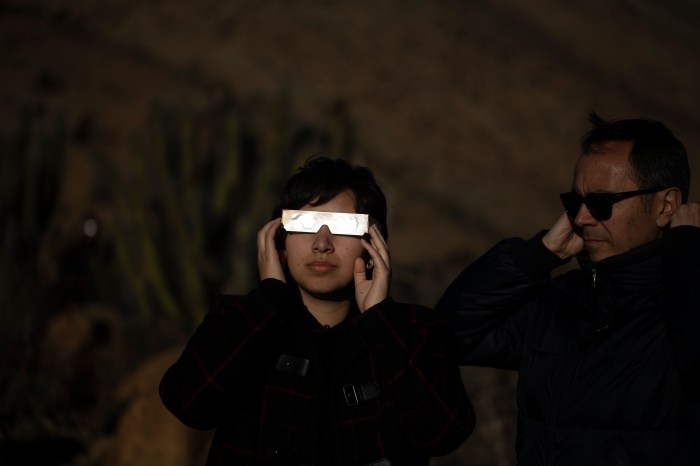As wedding dresses go, the one designed for Chanel by Karl Lagerfeld — and the first thing you see upon entering the Metropolitan Museum of Art’s new fashion exhibit — is astoundingly elegant. And unusual — it’s made of scuba knit.
But it’s the train — a very, very long train, in a gold baroque print, dusted with pearls, gems and rhinestones — that’ll take a fashion lover’s breath away. It’s just one of 170 remarkable garments now on display at the Met’s Costume Institute. The exhibit, which opened earlier this month and runs through Aug. 14, features works by some of fashion’s most exclusive labels — Chanel, Dior, Givenchy, Balenciaga, Pierre Cardin, Alexander McQueen and more.
The space is divided into six sections (the major specialties of haute couture — embroidery, feather work, artificial flowers, pleating, lacework and leatherwork). In each, traditional designs stand alongside modern dresses created by digital technology (3-D printers, lasers) with new materials like resin, foam and . . . straws?
“There are no more rules,” said cutting-edge British designer Gareth Pugh at a press preview, standing beside two of his dresses made of plastic straws. “In order to move forward, you have to push things a little bit and move with the times.”
From the title of the exhibit — “Manus x Machina: Fashion in an Age of Technology” — you might expect a slew of high-tech gadgets and gizmos. At least an Apple Watch. (Apple is a sponsor.) But the emphasis here isn’t on futuristic, sci-fi styles. Rather it’s a celebration of the dazzling heights fashion can reach when it combines the artistry of traditional craftsmen with modern technological advances.
The hand (manus) and machine (machina), working together, is “the future of fashion,” says the Costume Institute’s curator, Andrew Bolton.
Lagerfeld’s scuba wedding gown, for instance, is hand-molded, machine sewn, then hand-embroidered, and the train’s pattern was hand-drawn, then digitally manipulated. With Pugh’s dresses, the wool under-layer is machine-sewn, but each straw is hand-cut and hooked on like an earring.
Granted, not everyone is going to want to wear Dutch designer Iris van Herpen’s feather dress adorned with — yikes! — actual bird skulls, or Hussein Chalayan’s fiberglass gown that a wearer steps into via a doorway in back, and which moves by remote control, with spring-loaded crystals that fly off and swirl around the dress. But they’re amazing to see.
“A new aesthetic is emerging,” Bolton said, “one of . . . unfettered imaginings.”















